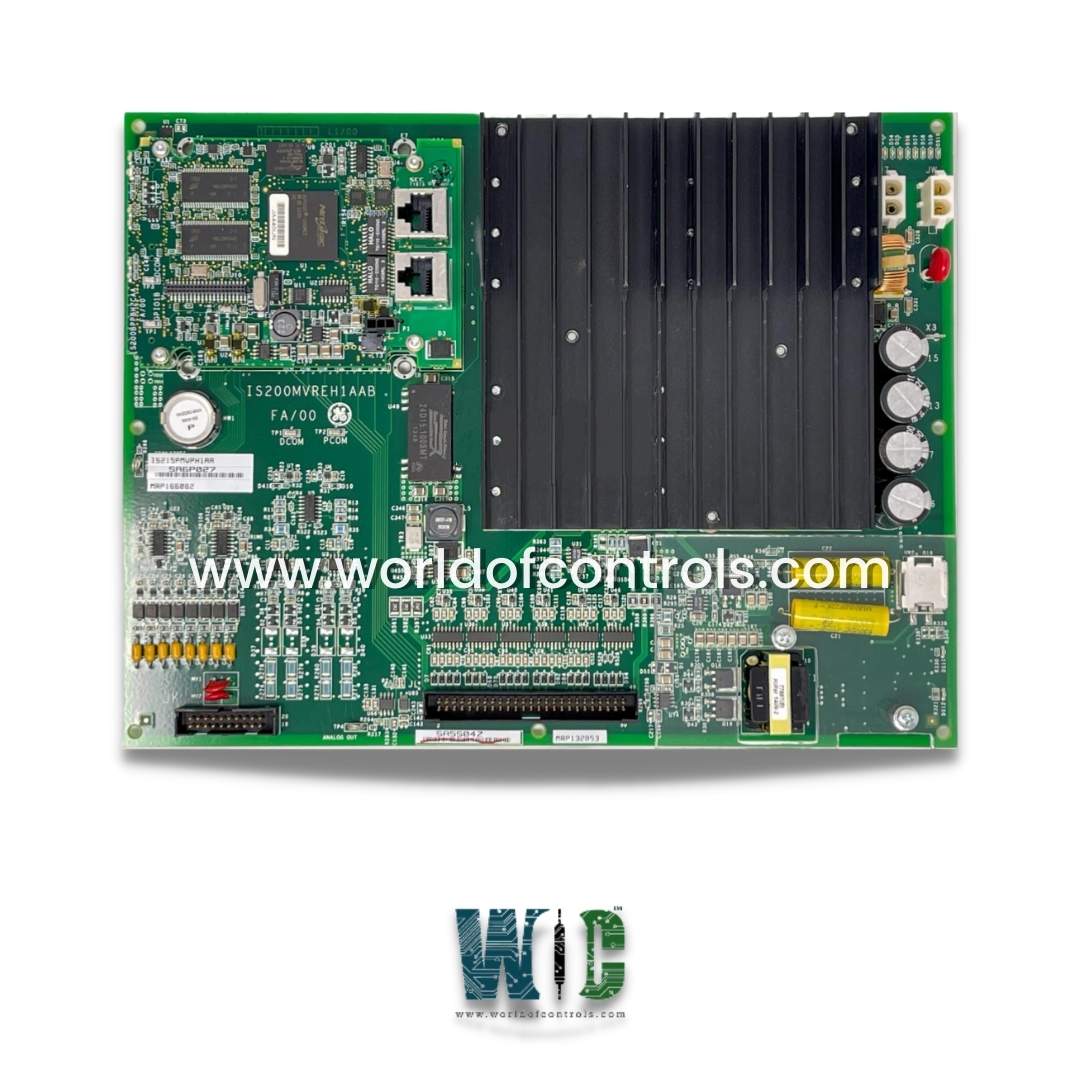
World Of Controls understands the criticality of your requirement and works towards reducing the lead time as much as possible.
IS215PMVPH1A - I/O Module is available in stock which ships the same day.
IS215PMVPH1A - I/O Module comes in UNUSED as well as REBUILT condition.
To avail our best deals for IS215PMVPH1A - I/O Module, contact us and we will get back to you within 24 hours.
Part No.: IS215PMVPH1A
Manufacturer: General Electric
Country of Manufacture: United States of America (USA)
Size: 17.8 cm high x 33.02 cm wide
Technology: Surface mount
Product Type: I/O Module
Availability: In Stock
Series: Mark VIe
IS215PMVPH1A is an I/O Module developed by GE. It is a part of Mark VIe control system. In Mark VIe systems, the I/O packs comprise two essential components- the generic processor board and the data acquisition board, which varies depending on the connected device type. These packs, situated on each terminal board, are pivotal in the system's functionality. They digitize signals from sensors and transducers, execute specialized control algorithms, and facilitate communication with the central Mark VIe controller. By performing these tasks, the I/O packs ensure smooth integration and operation of connected devices within the broader control system, contributing to the system's overall efficiency and effectiveness.
Terminal blocks are essential components within control systems, facilitating the flow of signals from sensors to the boards. Two primary types of terminal boards are available, each serving specific functions.
The WOC team is always available to help you with your Mark VIe requirements. For more information, please contact WOC.
What is IS215PMVPH1A?
It is an I/O Module developed by GE under the Mark VIe series.
How does Turbine-specific I/O impact instrumentation requirements?
Turbine-specific I/O reduces or eliminates the need for substantial interposing instrumentation.
What benefits does Turbine-specific I/O offer in terms of system reliability?
It minimizes potential single point failures, particularly in critical areas, leading to improved running reliability and reduced long-term maintenance.
How does direct interface to sensors and actuators affect diagnostics?
Direct interface enables diagnostics to directly interrogate devices on equipment, maximizing effectiveness.
What is the significance of data obtained through direct device interrogation?
The data is crucial for analyzing device and system performance, optimizing overall operation and maintenance strategies.